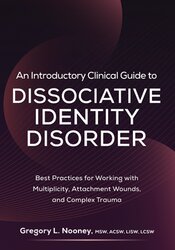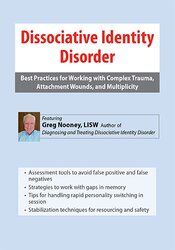5 Common Myths About Dissociative Identity Disorder (DID)

We know how important it is to differentiate between fact and fiction when it comes to mental health conditions. Dissociative Identity Disorder (DID) is often sensationalized in popular media, which can perpetuate myths and make it harder for clients living with DID to receive appropriate, trauma-informed care.
Let’s break down five common myths about DID and what the research really tells us.
Dissociative Identity Disorder (DID) Myth #1: DID is Extremely Rare
A common misconception is that DID is exceptionally rare. In reality, it’s more prevalent than most clinicians realize. Research suggests that DID affects 1–3% of the population, which is comparable to the prevalence of bipolar disorder. These numbers highlight the importance of accurate screening and diagnosis in clinical practice.
Dissociative Identity Disorder (DID) Myth #2: DID is Just Like Having Mood Swings
Another myth is that DID simply looks like severe mood swings. DID is far more complex and is characterized by distinct identity states—each with its own memories, behaviors, and sometimes even physiological differences. Unlike typical mood fluctuations, DID involves disruptions in memory, sense of self, and continuity.
Dissociative Identity Disorder (DID) Myth #3: People with DID Are Dangerous
This harmful myth stems largely from Hollywood depictions. In reality, individuals with DID are far more likely to harm themselves than others. Many are survivors of severe, often early-life trauma. Viewing these clients through a trauma-informed lens is essential to reducing stigma and fostering safety.
Dissociative Identity Disorder (DID) Myth #4: DID is Caused by Suggestion or Media
Some still believe that DID develops because of media influence or suggestion during therapy. This couldn’t be further from the truth. DID develops as a defense mechanism in children exposed to overwhelming, chronic trauma, usually at an age when their sense of self is still forming.
Dissociative Identity Disorder (DID) Myth #5: Integration is Always the Goal
In therapeutic settings, integration (merging all identity states into one) is often assumed to be the ultimate treatment goal. However, not all clients desire or require full integration. Many aim for internal cooperation and collaboration among their identity states (or “alters”), prioritizing health, stability, and functionality over forced unity.
Why These Dissociative Identity Disorder (DID) Myths Matter
When clinicians hold on to myths about DID, it can harm the therapeutic alliance and perpetuate stigma. Understanding the realities of DID is crucial for providing effective trauma-informed care and supporting the unique needs of each client.
To dive deeper into evidence-based care for DID, check out the Introductory Clinical Guide to DID. This guide offers practical strategies for assessment and treatment from a trauma-informed perspective.

Based on Greg Nooney’s 30-plus years of working with DID, this introductory how-to guide provides you with foundational, yet easy-to-follow, best practices for identifying and working with multiplicity.

Greg Nooney is the author of Diagnosing and Treating Dissociative Identity Disorder (NASW Press, 2022). A therapist for more than 35 years, he’s worked with hundreds of clients with severe trauma, dissociative symptoms, and dissociative identity disorder. Watch him for this training and discover a step-by-step guide on how you can diagnose, stabilize and treat trauma in these complex clients.




